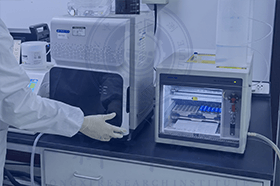检测项目(部分)
氧含量
一氧化碳含量
二氧化碳含量
其他氟碳化合物含量
蒸气压
乙烷、乙烯、丙烷、丙烯、异丁烷、正丁烷、反-2-丁烯、1-丁烯、异丁烯、顺-2-丁烯、异戊烷、正戊烷、1,3丁二烯
铜片腐蚀
氮含量
八氟环丁烷中水分含量
总硫含量
检测样品(部分)
八氟环丁烷
工业丁烷
检测标准(部分)
本标准适用于由正丁醇和盐酸为原料反应生产的氯代正丁烷。
分子式:C4H9Cl
相对分子质量:92.57(按2016年国际相对原子质量)
本标准适用于使用异丁烷制冷剂生产家用和类似用途制冷器具的生产线设计、制造、改造;日常生产、管理。其他烷类制冷剂可参照使用本标准。
These test methods are used to determine trace amounts of volatile chlorides in butane-butene mixtures. Such information is valuable in cases where chloride is deleterious in the use of this product; also chloride contributes to corrosion problems in processing units in instances where further processing of this material is involved.
1.1 These test methods cover the determination of the total volatile organic chlorides in concentrations from 10 to 100 ppm in butane-butene mixtures. The amperometric finish is not directly applicable in the presence of other substances that combine with silver ion or oxidize chloride ion in dilute acid solution. Bromides sulfides ammonia tobacco smoke and more than 25 181g of hydrogen peroxide in the test solution interfere in the spectrophotometric procedure.
1.2 Dissolved sodium chloride is not quantitatively determined using these test methods.
1.3 The values stated in SI units are to be regarded as the standard.
1.4 This standard does not purport to address all of the safety concerns if any associated with its use. It is the responsibility of the user of this standard to establish appropriate safety and health practices and determine the applicability of regulatory limitations prior to use. Specific warning statements are given in Sections 5 8 11 14 19 and Annex A1.
The BWC as determined by this test method is a measure of the ability of an activated carbon to adsorb and desorb butane from dry air under specified conditions. It is useful for quality control and evaluation of granular activated carbons that are used in applications where the adsorption of butane and desorption with dry air are of interest. The BWC can also provide a relative measure of the effectiveness of the tested activated carbons on other adsorbates.
The butane activity and retentivity can also be determined under the conditions of the test. The butane activity is an indication of the micropore volume of the activated carbon sample. The butane retentivity is an indication of the pore structure of the activated carbon sample.
1.1 This test method covers the determination of the butane working capacity (BWC) of new granular activated carbon. The BWC is defined as the difference between the butane adsorbed at saturation and the butane retained per unit volume of carbon after a specified purge. The test method also produces a butane activity value that is defined as the total amount of butane adsorbed on the carbon sample and is expressed as a mass of butane per unit weight or volume of carbon.
1.2 The values stated in SI units are to be regarded as standard. No other units of measurement are included in this standard.
1.3 This standard does not purport to address all of the safety concerns if any associated with its use. It is the responsibility of the user of this standard to establish appropriate safety and health practices and determine the applicability of regulatory limitations prior to use. For a specific hazard statement see 7.1.
The BWC as determined by this test method is a measure of the ability of an activated carbon to adsorb and desorb butane from dry air under specified conditions. It is useful for quality control and evaluation of granular activated carbons that are used in applications where the adsorption of butane and desorption with dry air are of interest. The BWC can also provide a relative measure of the effectiveness of the tested activated carbons on other adsorbates.
The butane activity and retentivity can also be determined under the conditions of the test. The butane activity is an indication of the micropore volume of the activated carbon sample. The butane retentivity is an indication of the pore structure of the activated carbon sample.
1.1 This test method covers the determination of the butane working capacity (BWC) of new granular activated carbon. The BWC is defined as the difference between the butane adsorbed at saturation and the butane retained per unit volume of carbon after a specified purge. The test method also produces a butane activity value that is defined as the total amount of butane adsorbed on the carbon sample and is expressed as a mass of butane per unit weight or volume of carbon.
1.2 This standard does not purport to address all of the safety problems if any associated with its use. It is the responsibility of the user of this standard to establish appropriate safety and health practices and determine the applicability of regulatory limitations prior to use. For a specific hazard statement see 7.1.
The butane activity as determined by this test method is a measure of the ability of an activated carbon to adsorb butane from dry air under specified conditions. It is useful for the quality control and evaluation of granular activated carbons. The butane activity is an indication of the micropore volume of the activated carbon sample. This activity number does not necessarily provide an absolute or relative measure of the effectiveness of the tested carbon for other adsorbates or at other conditions of operation.
The butane activity test can be used as a non-ozone depleting substitute for the carbon tetrachloride activity test in Test Method D 3467
Note 18212;This test has not been designed for use with powdered activated carbon but it has been used successfully when the flow rate or time are adjusted or the sample volume is decreased to keep the pressure drop at an acceptable value.

FIG. 1 Butane Versus Carbon Tetrachloride Correlation
1.1 This test method covers determination of the activation level of activated carbon. Butane activity (BA) is defined herein as the ratio (in percent) of the mass of butane adsorbed by an activated carbon sample to the mass of the sample when the carbon is saturated with butane under the conditions listed in this test method.
1.2 The values stated in SI units are to be regarded as the standard. The values given in parentheses are for information only.
1.3 This standard does not purport to address all of the safety concerns
if any
associated with its use. It is the responsibility of the user of this standard to establish appropriate safety and health practices and determine the applicability of regulatory limitations prior to use.
1.1 The thermophysical property tables for normal butane are for use in the calculation of the pressure-volume-temperature (PVT) thermodynamic and transport properties of normal butane for process design and operations. Two tables provide properties at the conditions of liquid-vapor equilibrium (saturation properties) one for liquid and one for vapor at temperatures between 135 K and the critical point 425.13 K. A third table provides properties at selected T p points for the equilibrium phase at temperatures between 140 K and 570 K at pressures to 20 MPa. The tables were developed using the National Institute of Standards and Technology Standard Reference Database product REFPROP version 10.0.
1.2 The values stated in SI units are to be regarded as standard. No other units of measurement are included in this standard.
1.3 This international standard was developed in accordance with internationally recognized principles on standardization established in the Decision on Principles for the Development of International Standards Guides and Recommendations issued by the World Trade Organization Technical Barriers to Trade (TBT) Committee.
1.1 The thermophysical property tables for isobutane are for use in the calculation of the pressure-volume-temperature (PVT) thermodynamic and transport properties of isobutane for process design and operations. Tables are provided for gaseous and liquid isobutane at temperatures between 120 and 570 K at pressures to 20 MPa. One table provides properties at the conditions of liquid-vapor equilibrium (saturation properties). The other table provides properties at selected T p points for the equilibrium phase at those conditions. The tables were developed by the National Institute of Standards and Technology from a Standard Reference Database product REFPROP version 8.0.
1.2 The values stated in SI units are to be regarded as standard. No other units of measurement are included in this standard.
1.1 The thermophysical property tables for normal butane are for use in the calculation of the pressure-volume-temperature (PVT) thermodynamic and transport properties of normal butane for process design and operations. Tables are provided for gaseous and liquid normal butane at temperatures between 136 and 560 K at pressures to 20 MPa. One table provides properties at the conditions of liquid-vapor equilibrium (saturation properties). The other table provides properties at selected T p points for the equilibrium phase at those conditions. The tables were developed by the National Institute of Standards and Technology from a Standard Reference Database product REFPROP version 8.0.
1.2 The values stated in SI units are to be regarded as standard. No other units of measurement are included in this standard.
These test methods are used to determine trace amounts of volatile chlorides in butane-butene mixtures. Such information is valuable in cases where chloride is deleterious in the use of this product; also chloride contributes to corrosion problems in processing units in instances where further processing of this material is involved.
1.1 These test methods cover the determination of the total volatile organic chlorides in concentrations from 10 to 100 ppm in butane-butene mixtures. The amperometric finish is not directly applicable in the presence of other substances that combine with silver ion or oxidize chloride ion in dilute acid solution. Bromides sulfides ammonia tobacco smoke and more than 25 x03BC;g of hydrogen peroxide in the test solution interfere in the spectrophotometric procedure.
1.2 Dissolved sodium chloride is not quantitatively determined using these test methods.
1.3 The values stated in SI units are to be regarded as standard. No other units of measurement are included in this standard.
1.4 This standard does not purport to address all of the safety concerns if any associated with its use. It is the responsibility of the user of this standard to establish appropriate safety and health practices and determine the applicability of regulatory limitations prior to use. Specific warning statements are given in Sections 5 8 11 14 19 and Annex A1.

检测资质(部分)










检测优势
检测实验室(部分)



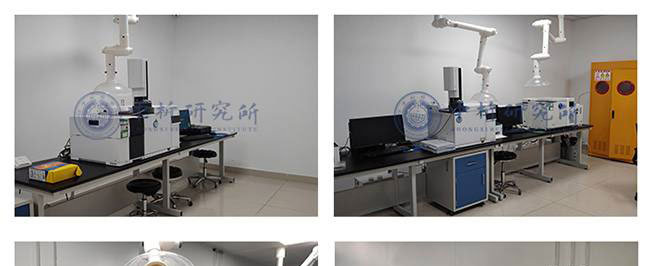
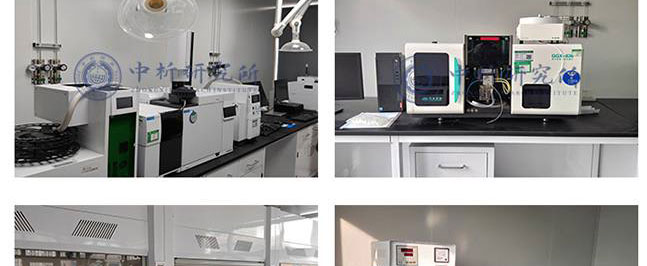
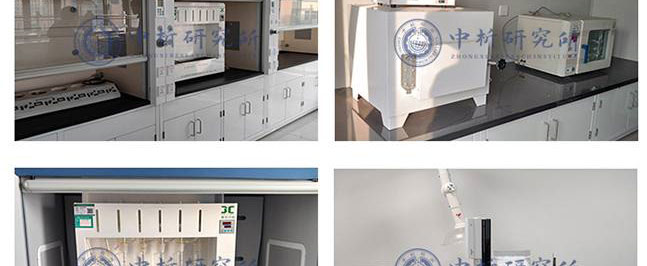
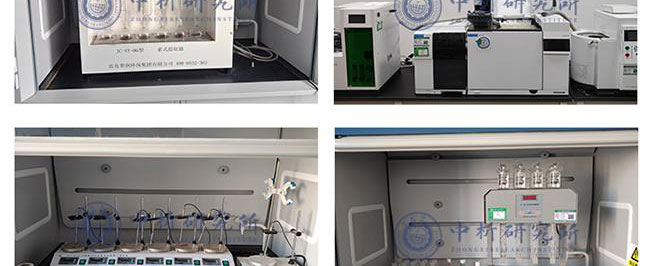
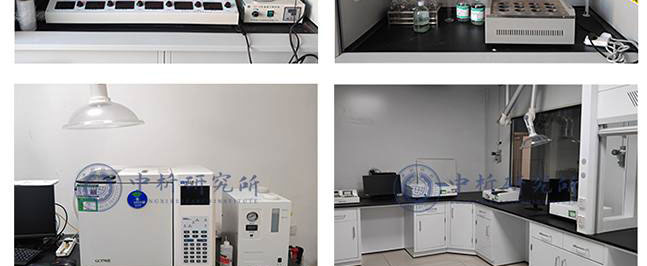
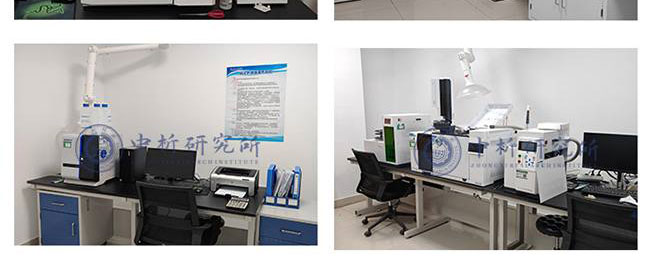
合作客户(部分)





检测报告作用
1、可以帮助生产商识别产品的潜在问题或缺陷,并及时改进生产工艺,保障产品的品质和安全性。
2、可以为生产商提供科学的数据,证明其产品符合国际、国家和地区相关标准和规定,从而增强产品的市场竞争力。
3、可以评估产品的质量和安全性,确保产品能够达到预期效果,同时减少潜在的健康和安全风险。
4、可以帮助生产商构建品牌形象,提高品牌信誉度,并促进产品的销售和市场推广。
5、可以确定性能和特性以及元素,例如力学性能、化学性质、物理性能、热学性能等,从而为产品设计、制造和使用提供参考。
6、可以评估产品是否含有有毒有害成分,以及是否符合环保要求,从而保障产品的安全性。
检测流程
1、中析研究所接受客户委托,为客户提供检测服务
2、客户可选择寄送样品或由我们的工程师进行采样,以确保样品的准确性和可靠性。
3、我们的工程师会对样品进行初步评估,并提供报价,以便客户了解检测成本。
4、双方将就检测项目进行详细沟通,并签署保密协议,以保证客户信息的保密性。在此基础上,我们将进行测试试验.
5、在检测过程中,我们将与客户进行密切沟通,以便随时调整测试方案,确保测试进度。
6、试验测试通常在7-15个工作日内完成,具体时间根据样品的类型和数量而定。
7、出具检测样品报告,以便客户了解测试结果和检测数据,为客户提供有力的支持和帮助。
以上为丁烷检测的检测内容,如需更多内容以及服务请联系在线工程师。








